The date palm and the 8 stages of ripeness
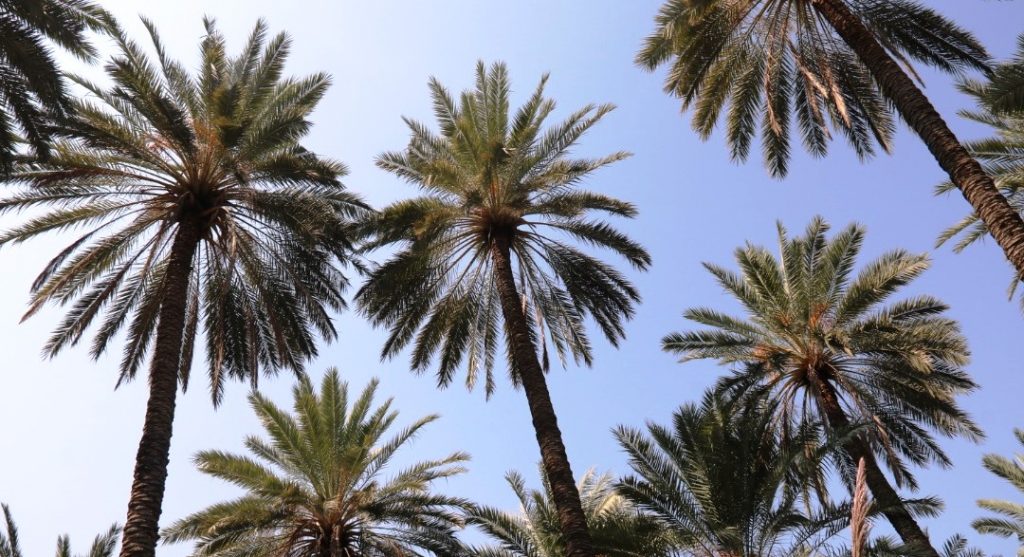
About the date palm
The date palm is one of the oldest fruit trees in the world, with the earliest pictures dating back to 3000 BC. The Persian Gulf region is regarded as its home. It is here, in the hinterland of the port city of Bandar Abbas, that Dombaz Food GmbH has its roots.
In appearance, date palms resemble coconut palms, and they can reach 30 metres in height. Between 30 and 40 leaflets, which can grow up to four metres long, form at the end of each unbranched trunk. Date palms love to stretch their crowns into the hot, dry desert air.
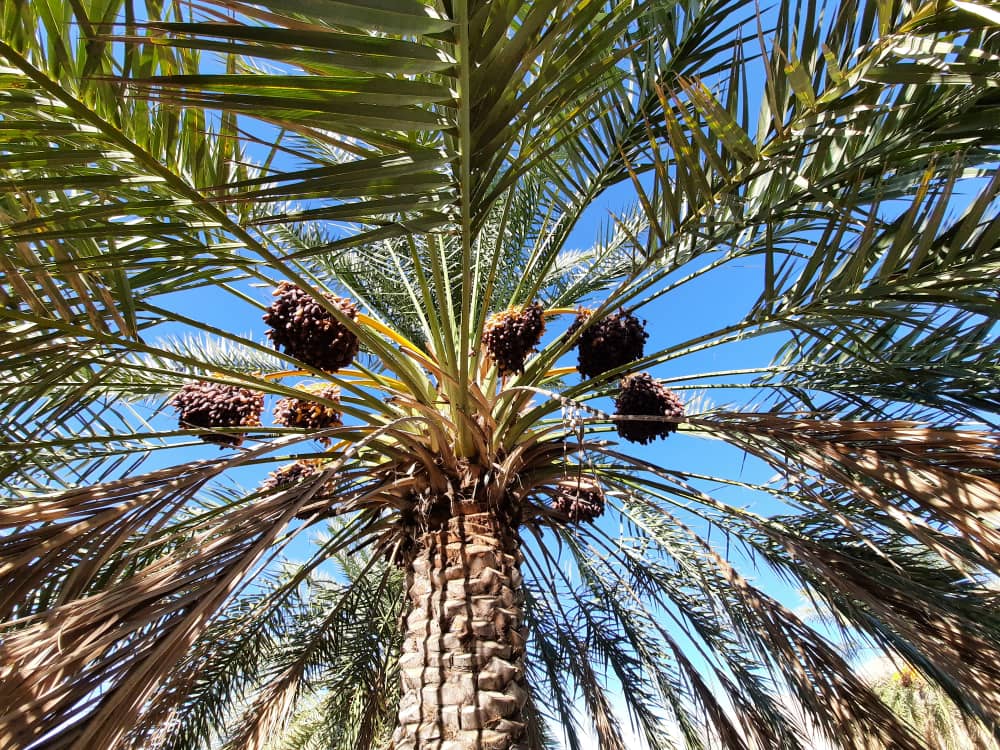
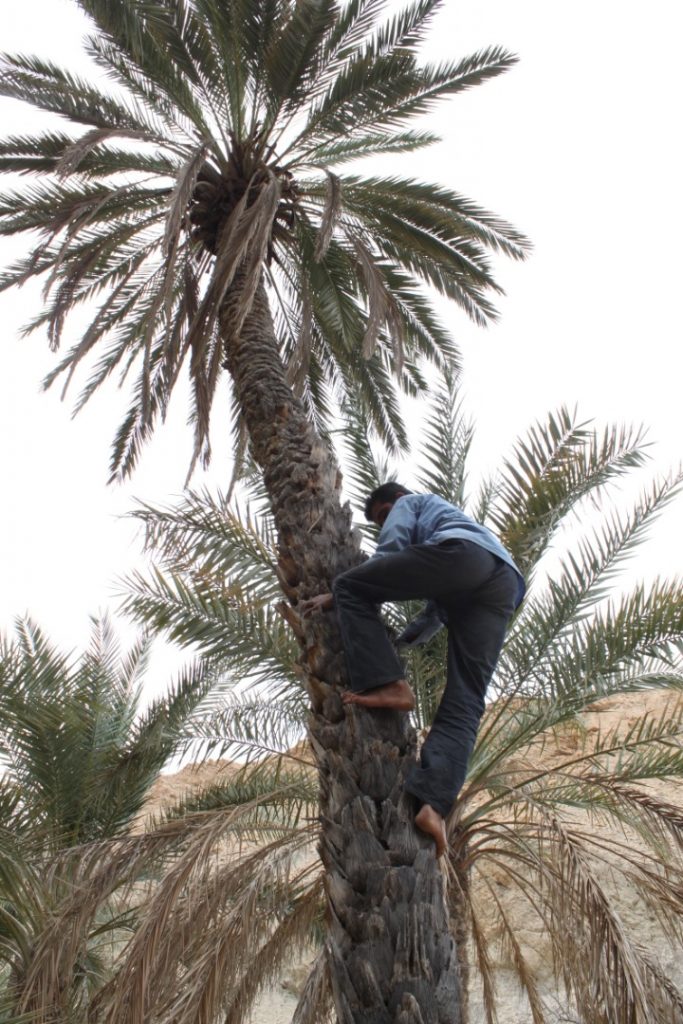
Date palms can be male or female, and it is the female plant that bears the fruit. Uncultivated palms are pollinated by the wind. It is uneconomical for date farmers to plant their groves with equal numbers of male and female date palms. Instead, one or two male palms are planted for every 50 females, with the males serving for pollination only. The male palms form the stamens that are needed for fertilising the flowers on the female palms.
Then it’s over to a worker known as the ‘maher’ who cuts off the pollen-bearing male flowers (legareh) between March and May to pollinate the female flowers.
Next, they climb right to the top of each and every tree, tying themselves to the trunk with a rope and working their way up, metre by metre, one foot at a time. Once at the top, they knot the male flower into the female cluster of the palm tree using the threads from the date leaves.
The female inflorescences (pang) grow in panicles in the leaf axils and can bear between 400 and 500 white flowers. This is where the fruits are formed after fertilisation. When the fruits are ripe, they hang on grape-like strands, waiting to be harvested.
After around ten days, the date farmers can see whether pollination has (quite literally) borne fruit. The fertilised dates grow rapidly, while the unfertilised ones remain small and green and eventually shrivel up. During the harvesting period, which lasts four to six weeks, the fruit is harvested at various stages of ripeness. The soft fruits are usually picked by hand. When they are more or less ripe, they are shaken from the panicles, collected in cloths and then sorted. They are then quickly transferred to a cool place for storage to prevent them from drying out.

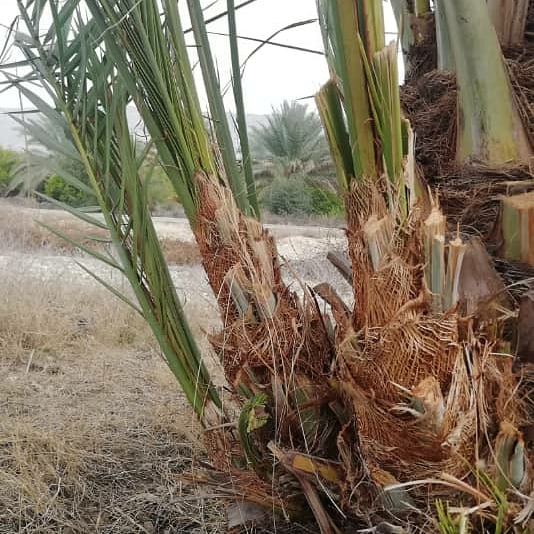
Male and female seedlings are selected for the propagation of palms. They develop as buds on the trunk or root of the tree and are detached for planting after their third year.
Date palms can bear fruit until they are 200 years old but are usually felled after 100 years as the yield decreases rapidly with age. Once the palm tree has been cut down, the leaves are used to make mats and woven goods, and the trunk and its wood is processed into chipboard and paper, and used to make building coatings.
The fruit of the date palm has eight
distinct stages of ripeness:
1st stage of ripeness: taruneh
Since time immemorial, the pollen of the taruneh has been used as a food supplement and a remedy for various ailments.
The pods and flowers are boiled and the steam condensed into a drink taken to boost the nerves and treat rheumatism and joint pain.

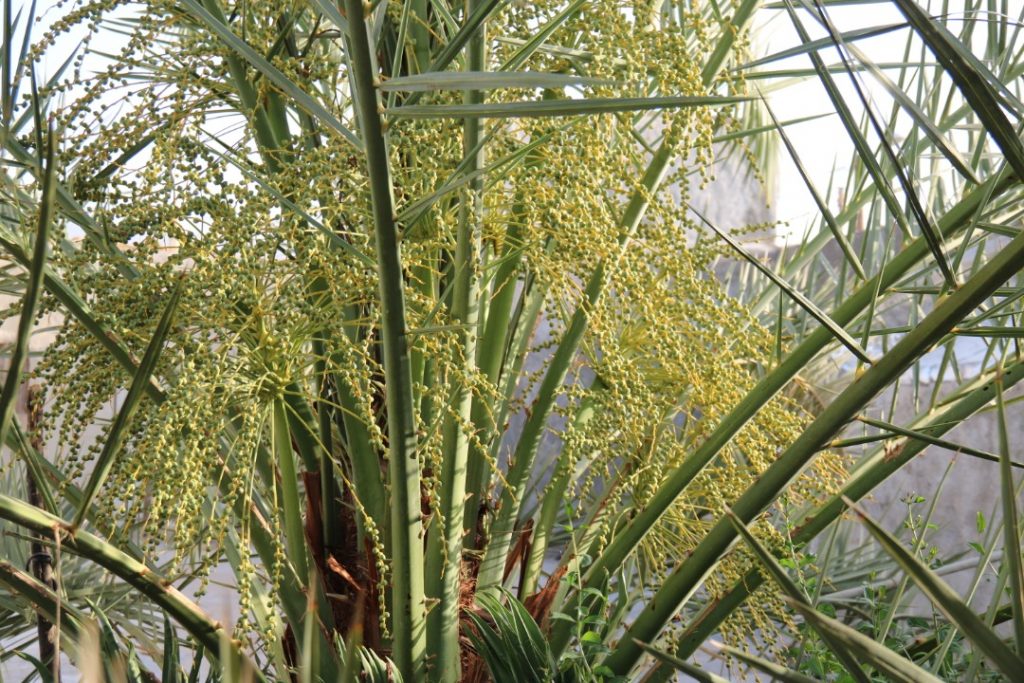
2nd stage of ripeness: pang
Pang is the name given to the female flowers/ears of the date fruit.
3rd stage of ripeness: legareh
Legareh are the flowers of the male date palm, which are knotted with those of the female, known as pang.

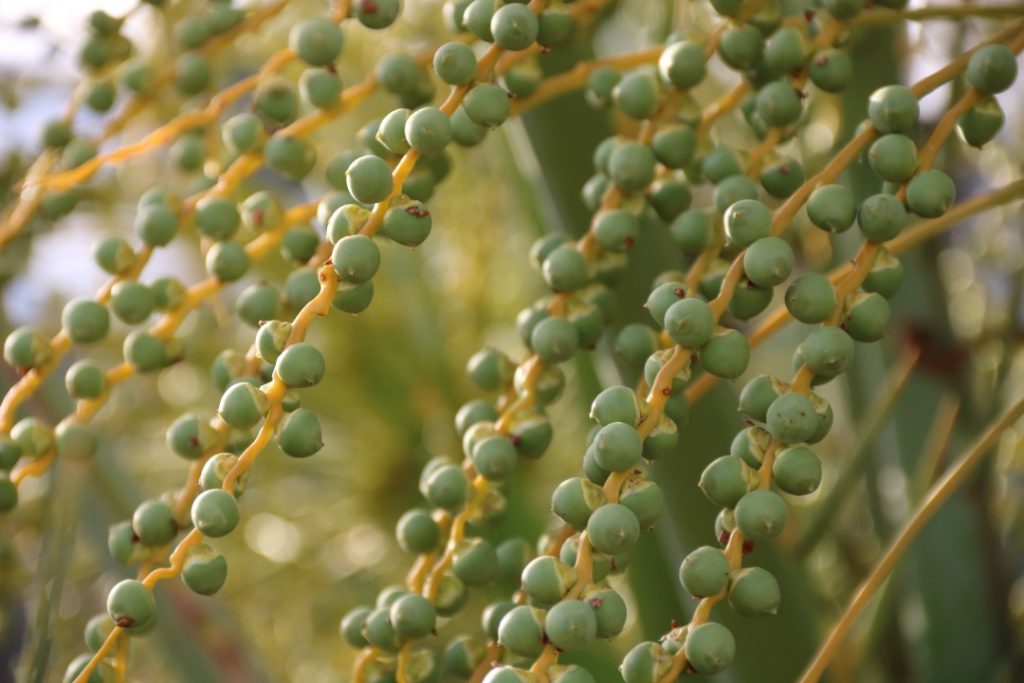
4th stage of ripeness: pudus
The small, green fruits are called pudus.
5th stage of ripeness: kharak
Kharak is the name given to the fruits of the date palm, which hang from the spike and turn red or yellow depending on the date variety.
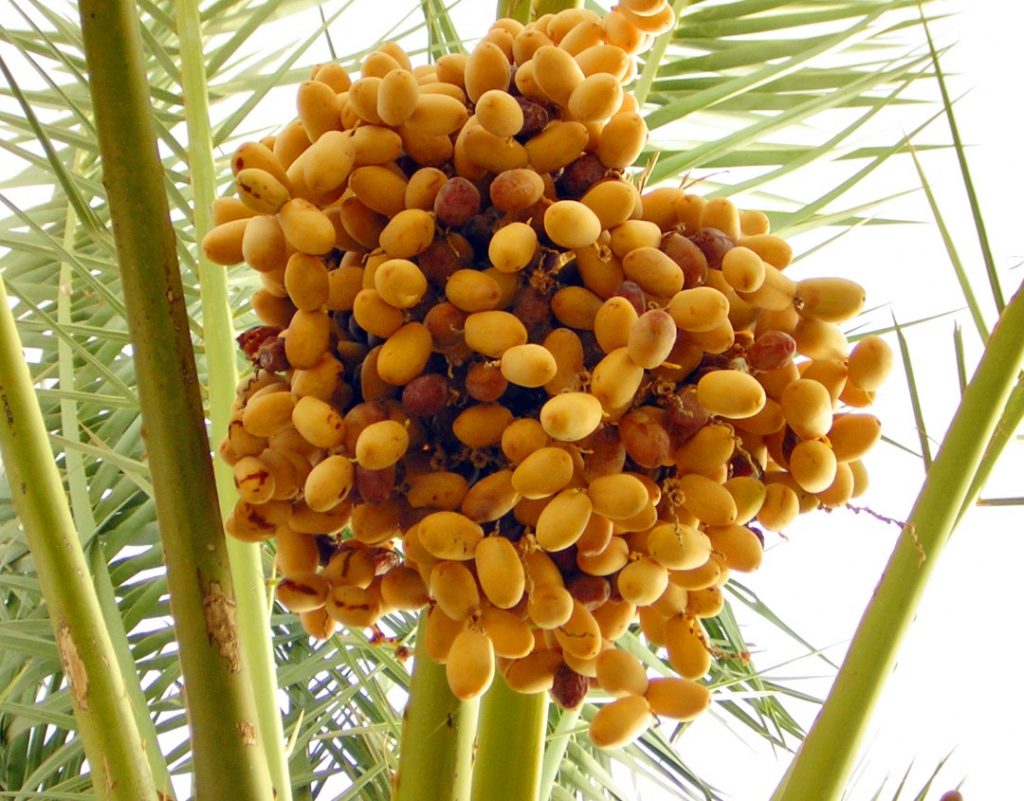
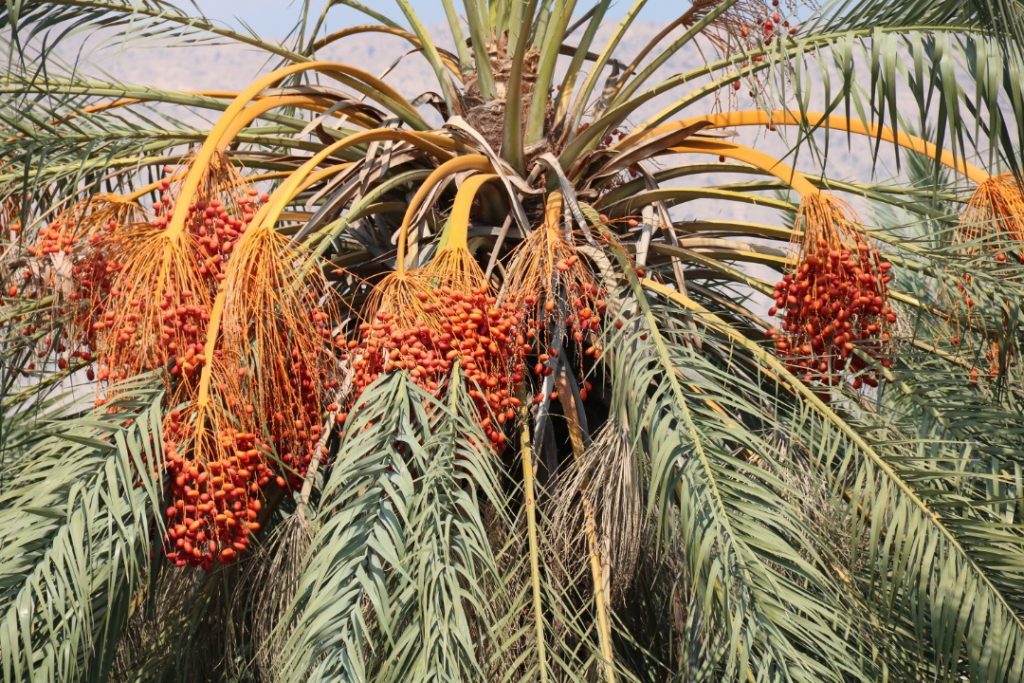
6th stage of ripeness: dombaz
Dombaz refers to the specific stage of ripeness in which the lower half of the fruit has already ripened to rotab level, while the upper half is still in the unripe kharak state.
7th stage of ripeness: rotab
At the rotab stage the fruity sweetness develops, just before the final stage of ripeness is reached.


8th stage of ripeness: khorma
Khorma is the Persian name for the ripe date fruit. Most varieties are harvested at this stage of ripeness.
